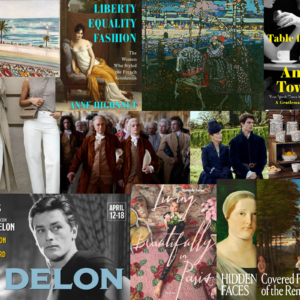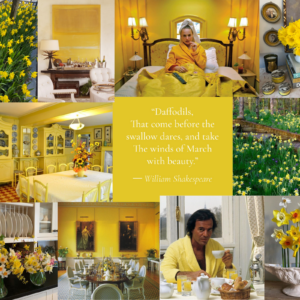For Sale: Denbigh Farm
by habituallychic
02 . 08 . 21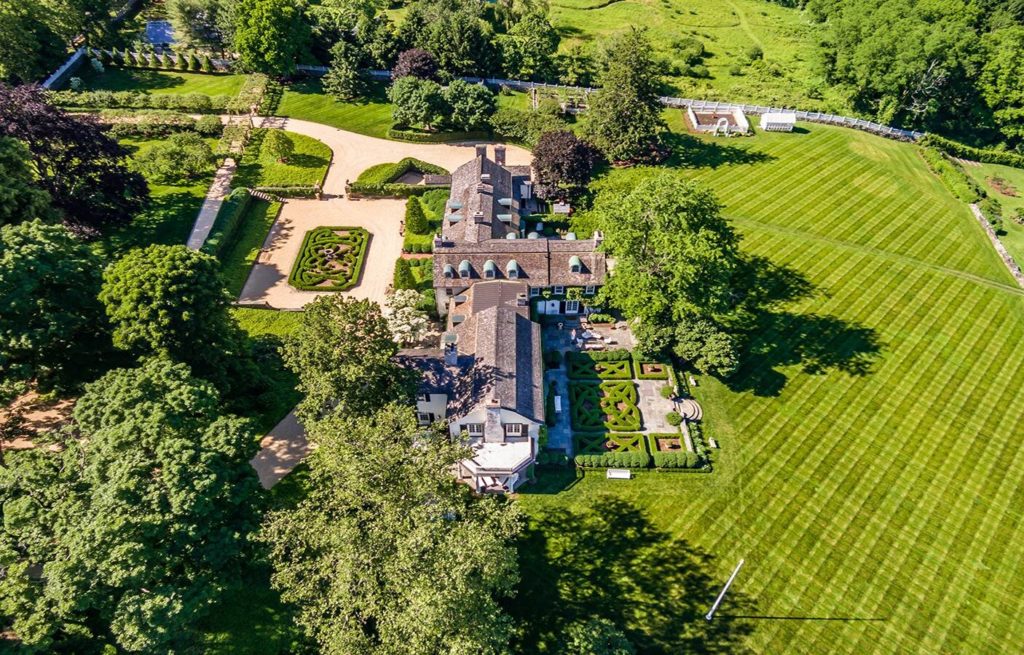
It’s always interesting when a real estate listing doesn’t include any interior photos. It usually means that they are in very bad shape or that the owner wants them to remain private. I suspect it’s the latter in case of Denbigh Farm in Greenwich, Connecticut which is currently for sale by Susie Hilfiger for $40 Million. But that didn’t prevent me from finding a few which researching the history of this remarkable property.
The Greenwich Historical Society featured the history of Denbigh Farm in their Greenwich Landmark Series.
In 1904 a wealthy newcomer to Greenwich, William T. Carrington, acquired a farmhouse on Riversville Road dating back to about 1775 and set about turning it into a manor house. According to legend, the restoration and expansion took two tries. Carrington first commissioned a nameless carpenter to do a second-floor addition on a flat-roof wing and then set off on a trip with his wife, only to return and find a clumsy addition unrelated in style to the graceful old house he bought. So Carrington began again, this time under the guidance of the prominent architects Albro & Lindeberg. They dismantled what had been done and designed a manor house that has been admired for over a hundred years.
The farm’s antecedents went back to the purchase of 27 acres in 1743 by Joseph Marshall, Jr., a Quaker, whose extended family in the area led to the area’s being known as “Quaker Ridge.” Thirty years later the property belonged to Eliphalet Mead, who built the original house, and later to Benjamin Fairchild, from whom Carrington bought it. Carrington, a highly successful grain broker in his native Toledo, Ohio, and Chicago, named his Greenwich estate Denbigh Farm and retained it as one of several residences around the country until his death in 1931 in his Park Avenue apartment in New York City. At the time of his passing, Carrington was memorialized not only for his business success but also as a philanthropist, who had been a founder of the Chicago Symphony and the American Opera Company in New York, which for four years presented operas in English. Among his many activities, he had been a director of Bellevue Hospital and chairman of its finance committee.
His widow sold Denbigh Farm in 1935 to Joseph Verner Reed, a theatrical producer, author, diplomat, art collector and founder of the Triton Press, which published art reproductions. Reed was also notable as the developer of Hobe Sound in Florida. The civic-minded Reed served as president of Greenwich Hospital and Greenwich Community Chest, now United Way, and as chairman of the American Shakespeare Festival and Academy. His son, Joseph Verner Reed, Jr., became owner of Denbigh Farm in 1972 and resided there for more than two decades. Before embarking on an illustrious public career as U.S. Ambassador to Morocco, Chief of Protocol under President George H.W. Bush and Under-Secretary-General of the United Nations, Reed had been executive assistant to David Rockefeller, then president of Chase Manhattan Bank. Among the many decorations presented to Reed were the Legion of Honor by France and the Yale Medal by his college. In 1995 Denbigh Farm was bought by fashion mogul, Tommy Hilfiger, and his then-wife Susan, who still owns it.

The estate, with its old-time dignity and charm, includes the multi-winged, shingled manor house, a superintendent’s cottage and stables that once housed a groom, five horses and three cows. The main house has a distinctive gambrel roof with small, round-arched dormers, roofed in copper. The main entrance is sheltered by a rounded portico with Tuscan columns and a cornice with balustrade. To one side is a carriage house, attached to a finely detailed water tower. Behind the house are an old orchard, a rose garden and a flowing brook.
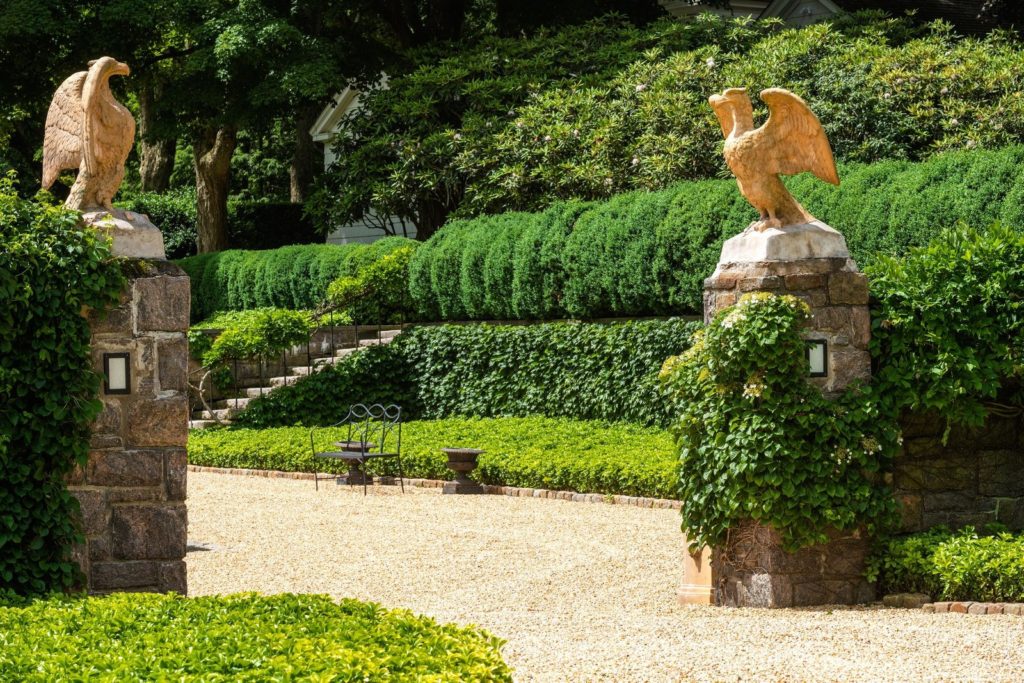
The real estate listing describes it as a “magical setting, 17+ acres with breathtaking panoramic views of Long Island Sound perched high above sea level. Period house, dating back to the late 1700’s. Continue the wonderful history of this special estate of an era of timeless refinement. A home with multiple wings that welcomes you. A lifestyle of memories, enjoyment & pleasure for years awaits the new buyer!”

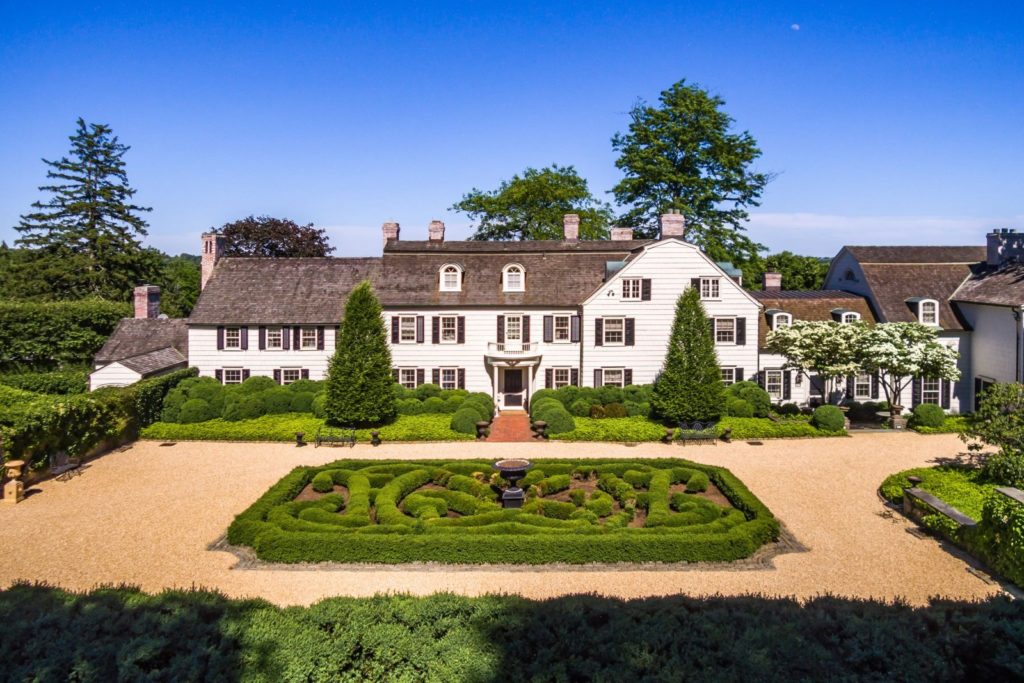
The interior description makes me really sad there aren’t many photos online or a floorplan.
Approximately 14,000 square feet, 7 bedrooms, 9 baths, 4 powder rooms, and 12 fireplaces. Step-down drawing room/ballroom with a high ceiling, paneling and a marble mantle imported from the 17th century Hotel Particulier Montmartre, the former residence of the Hermes family in Paris. A collection of furniture from the one time Paris home of the Duke and Duchess of Windsor, which was purchased at auction in the 1990’s is not included but may be available for purchase separately. The formal dining room has original hand painted Gracie Chinese wallpaper. The Oval office is a favorite plus the summer flower room, botanical room, the kitchen with original meat locker for cold storage, delightful morning room, silver room for sterling collection, and a spa.
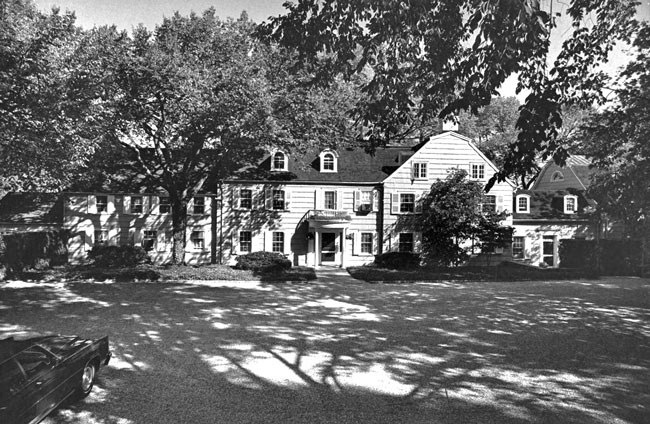
A old photo of Denbigh Farm from the Greenwich Historical Society.
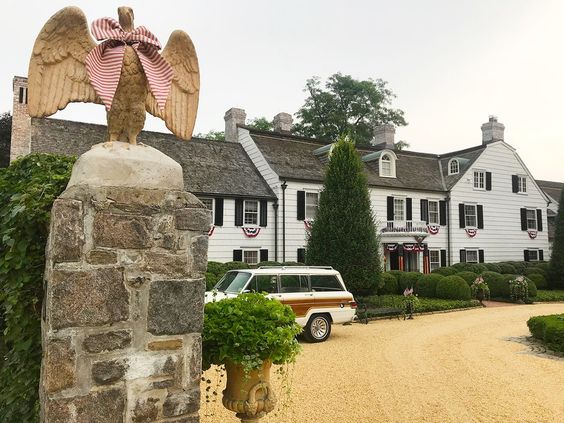
I did manage to find some photos on Instagram from Tiger Lily’s Interior Design in Greenwich. It looks like the helped to decorate for the 4th of July at one point. I’m also not sure if they just took on some upholstery projects or a full refresh of some areas.
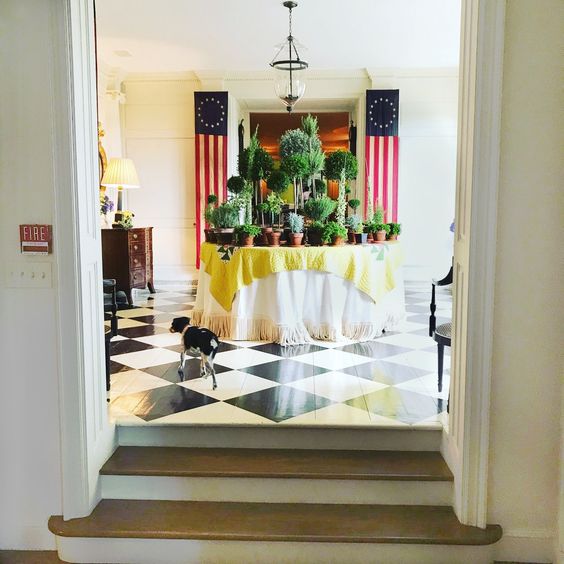
Interior designer Todd Alexander Romano worked on the house he called, “the most beautiful house in Greenwich”, with “wonderful Susie” for three years. “I redid the library (probably my favourite room), the dining room (keeping of course the magnificent paper!), her office, all of the guest rooms, the master bedroom, her dressing room, etc. We never did tackle the fabulous living room cum ballroom. That was almost eight or nine years ago and I have no idea how much of my work survives today. I haven’t been to the house in years. Susie has such a great and restless eye, always wanting to change things around, so I’d have to see pics to see how much of my work remains. It is such a beautiful and special house.”
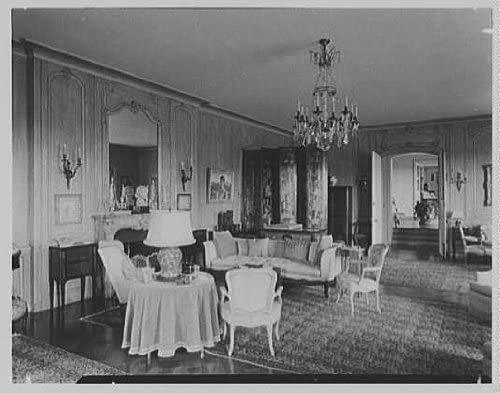
An old photo of the step-down living room that was once the ballroom.
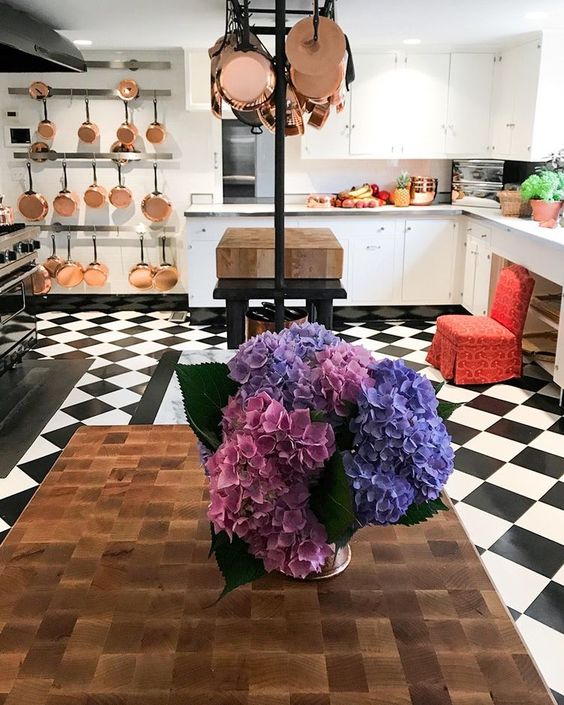
A view of the kitchen, “with original meat locker for cold storage, delightful morning room, silver room for sterling.”
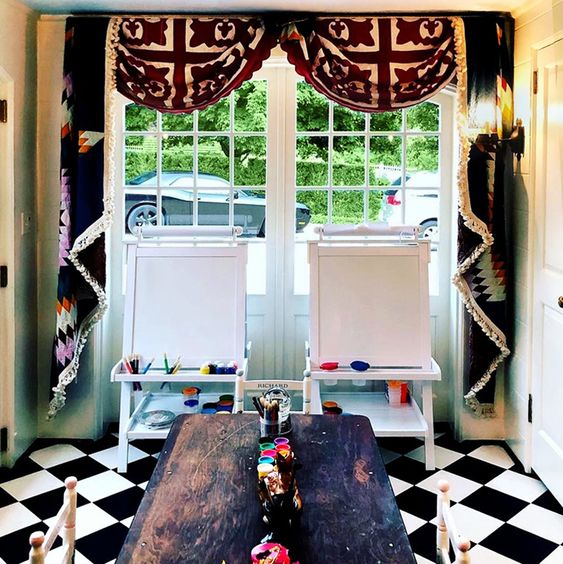
I think this is also part of the kitchen since the floor matches.
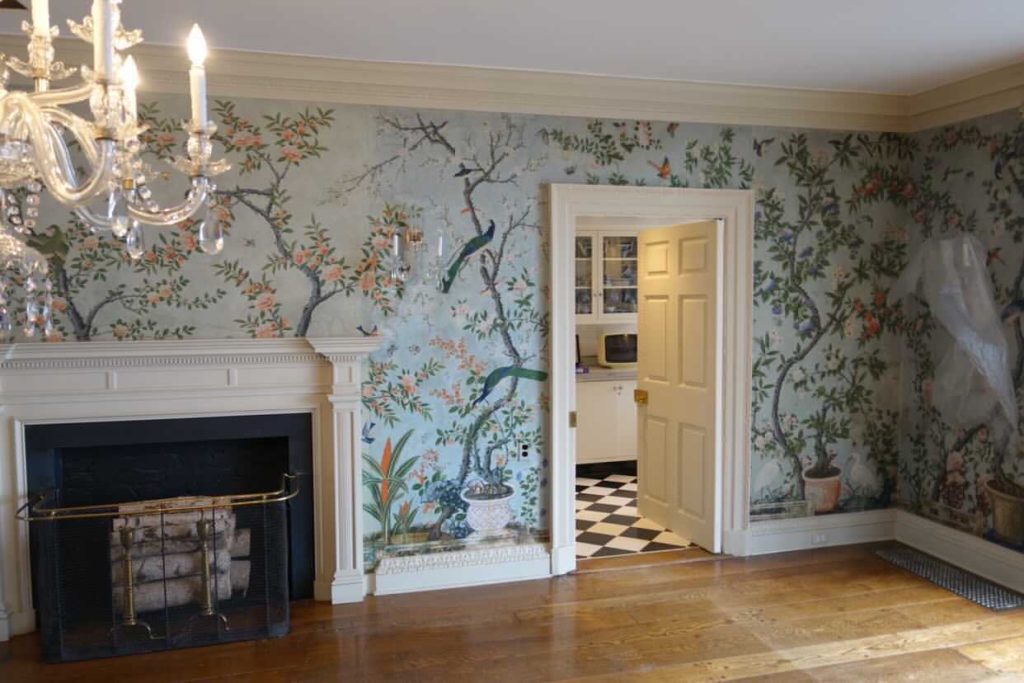
The Gracie wallpaper is original to the dining room which is part of the original 18th-century dining room. A view of the Butler’s pantry is visiable.

Another view of the dining room.
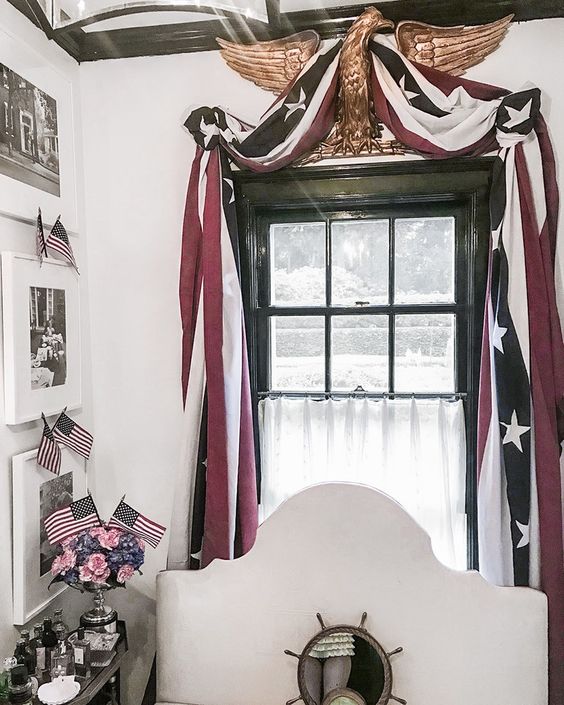
A room posted by Tiger Lily’s Interior Design.
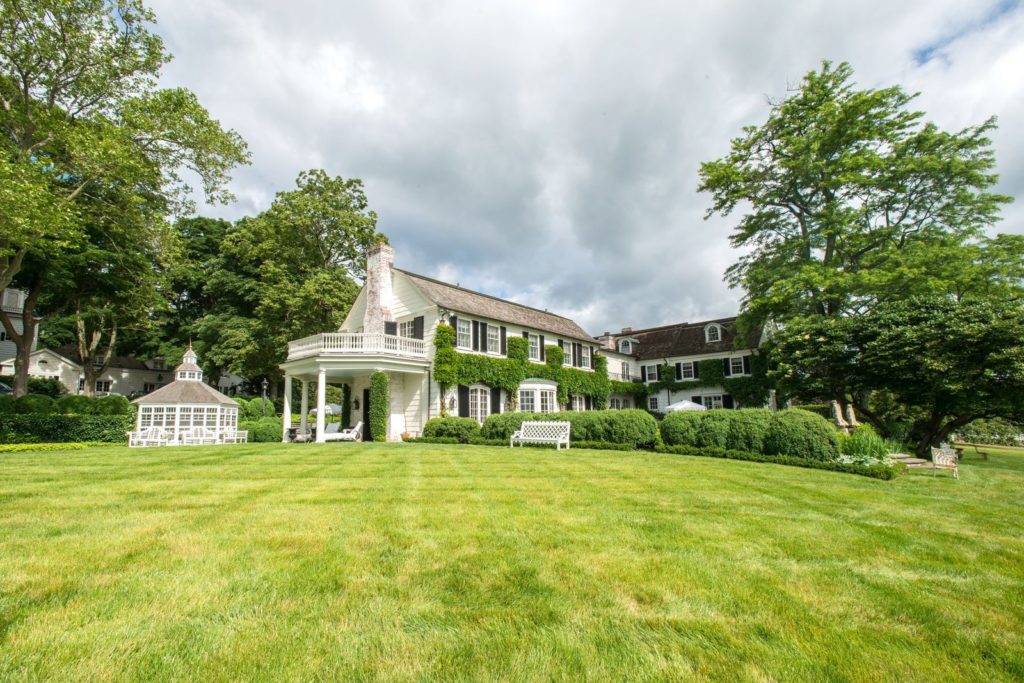
This house needs a buyer who will understand its history and not destroy the interiors or property.
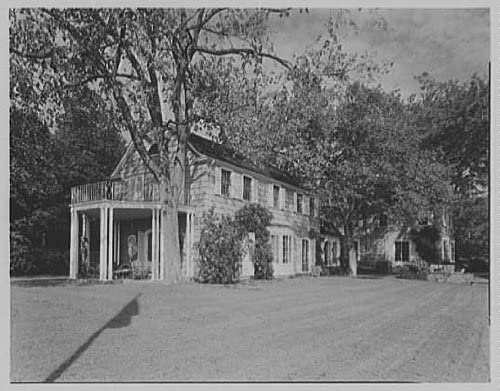
Another old photo showing the back of the house before the garden was created behind the house.
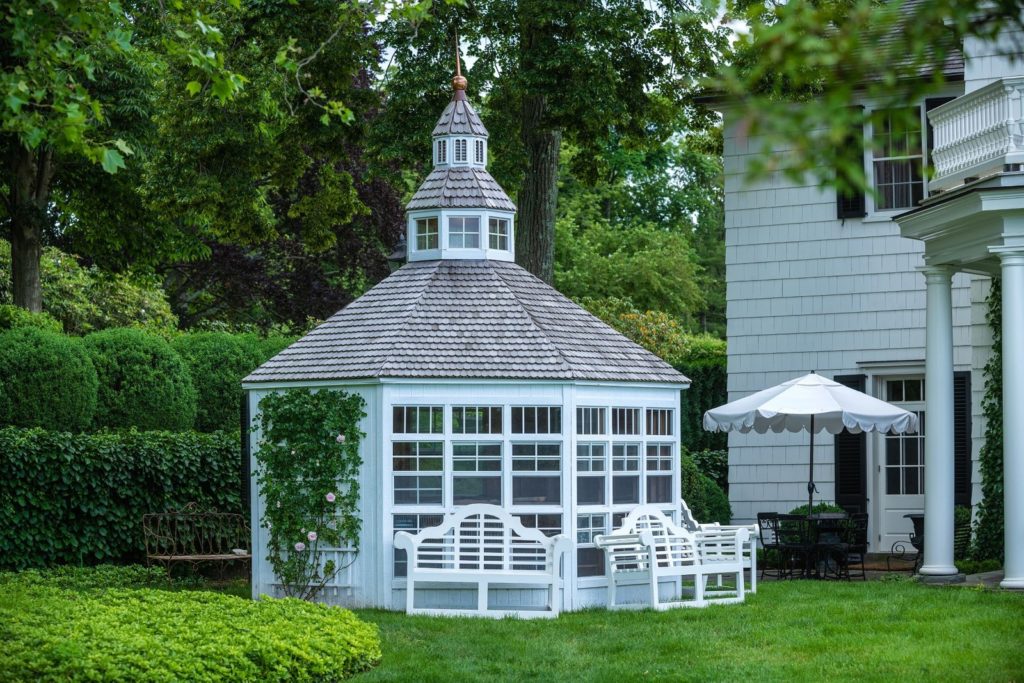
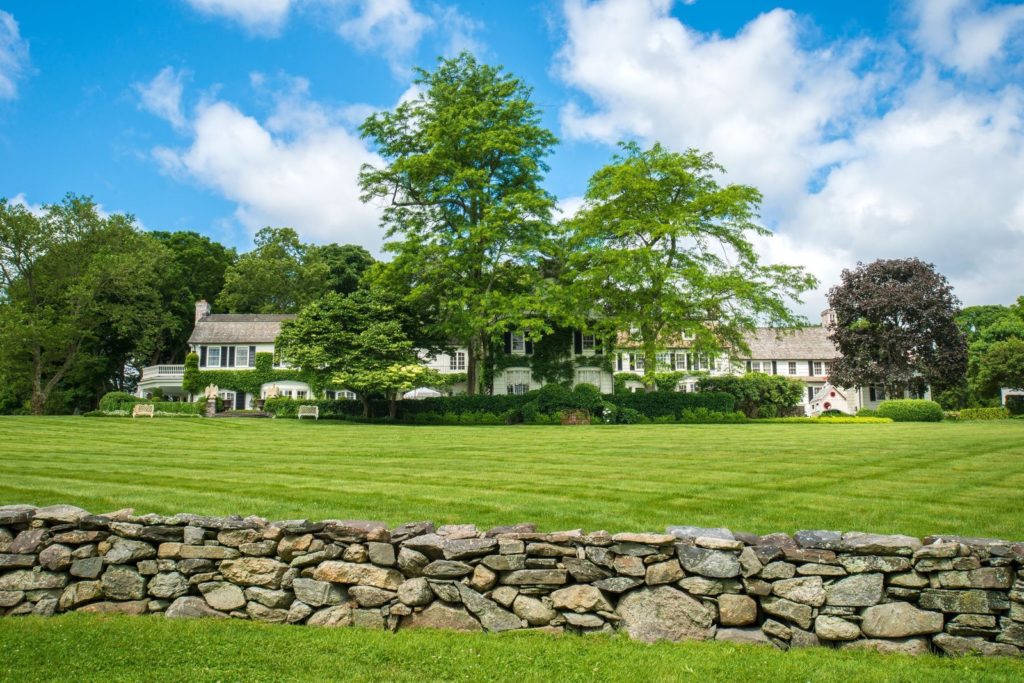
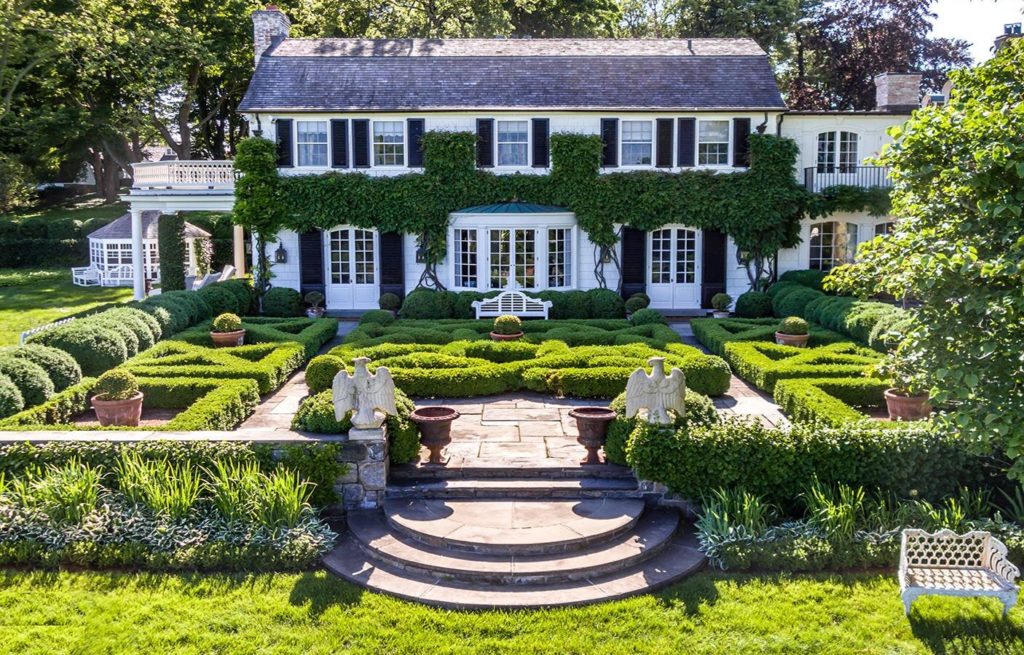
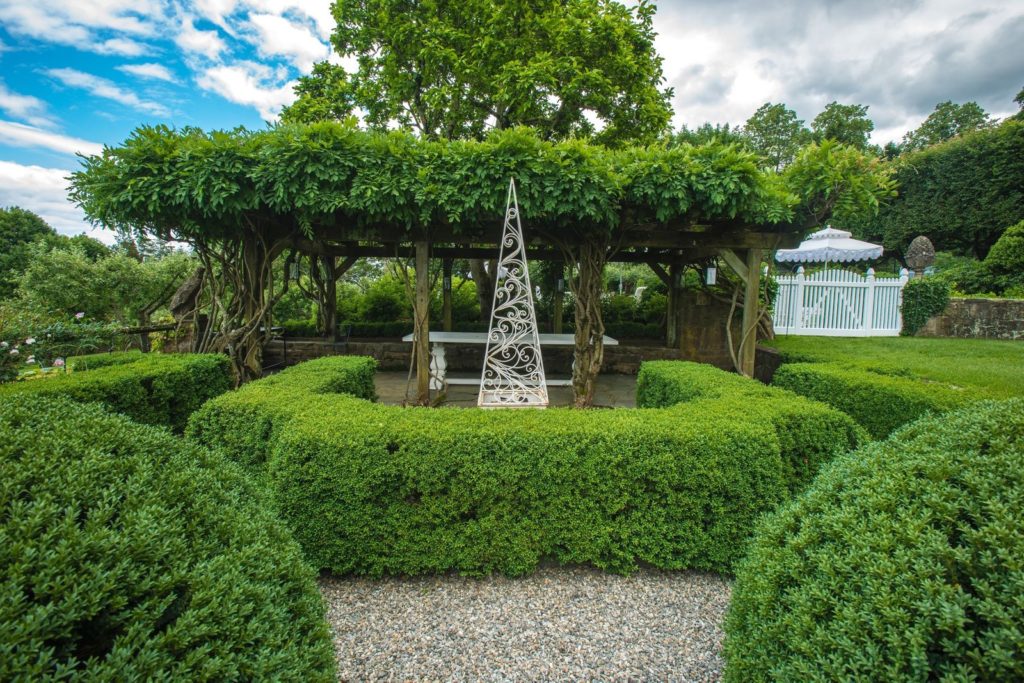
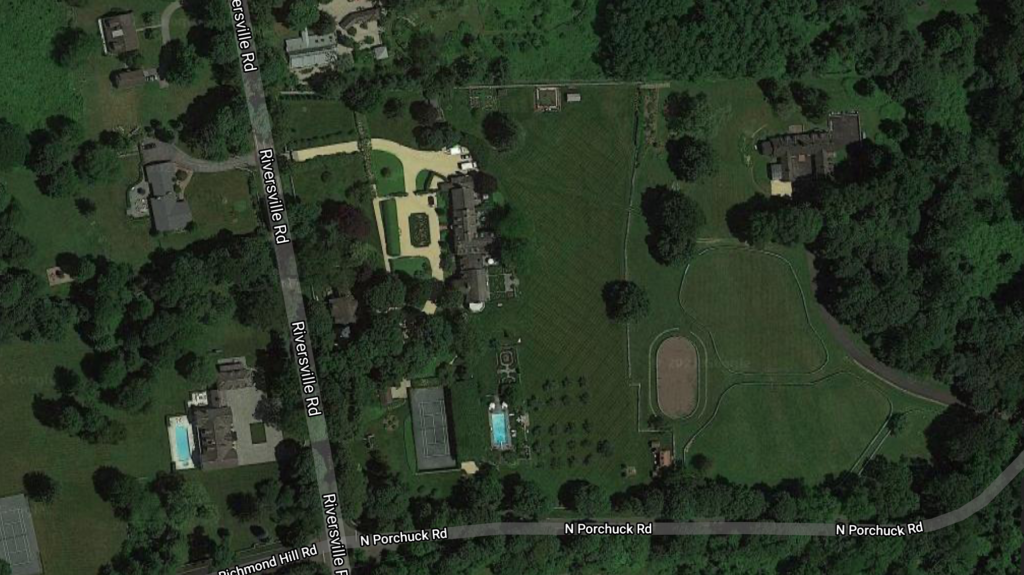
This aerial view from Google Maps give you an idea of the size of the property. The building at the top right is the stables.
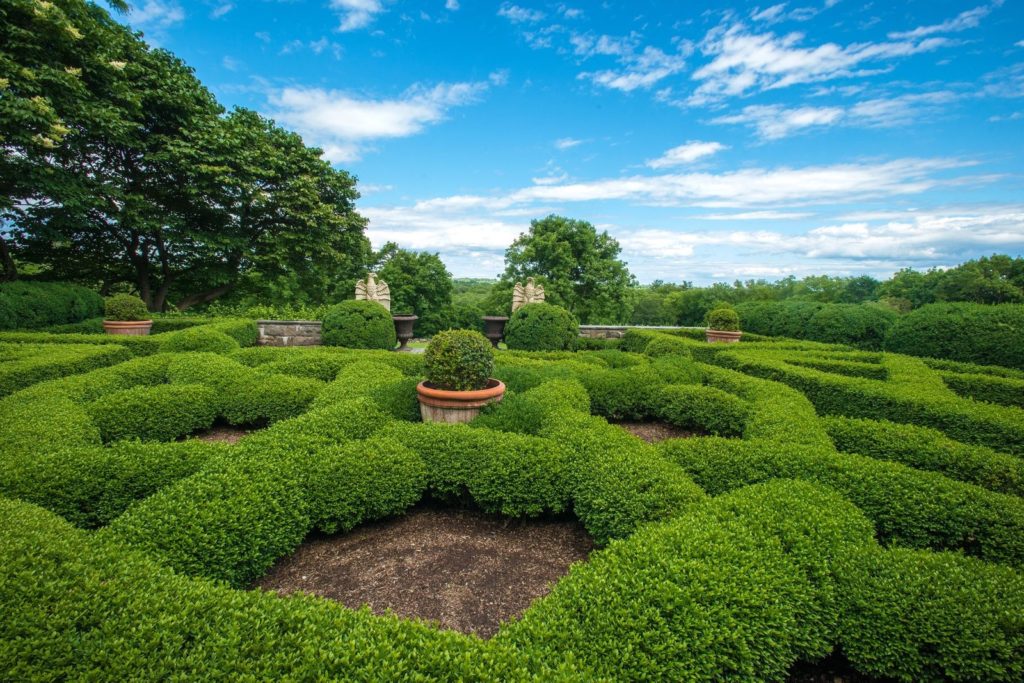
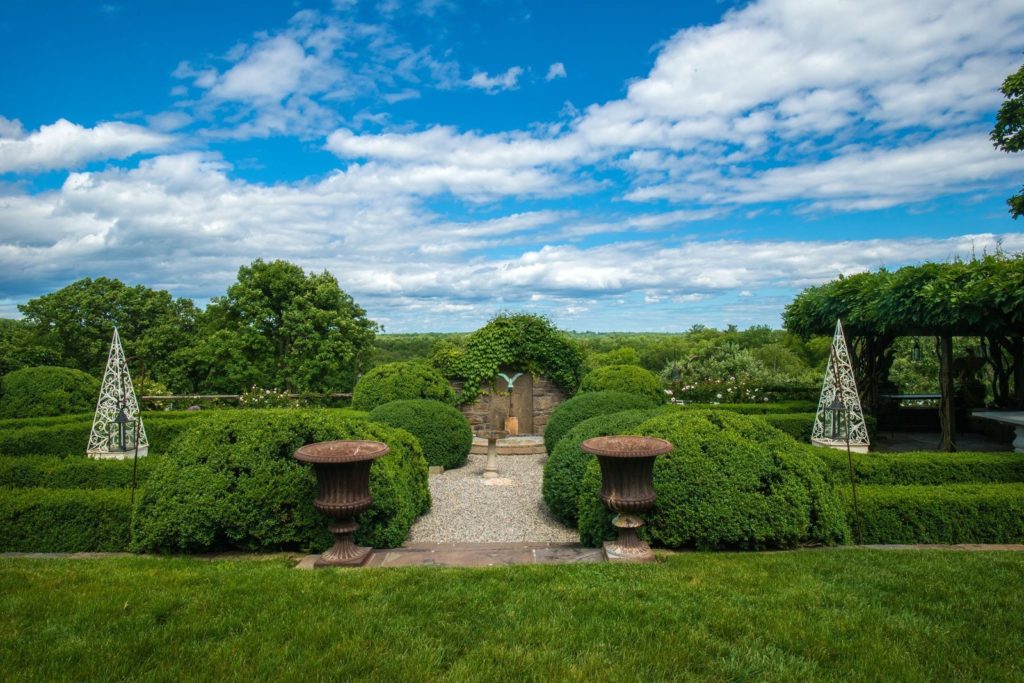

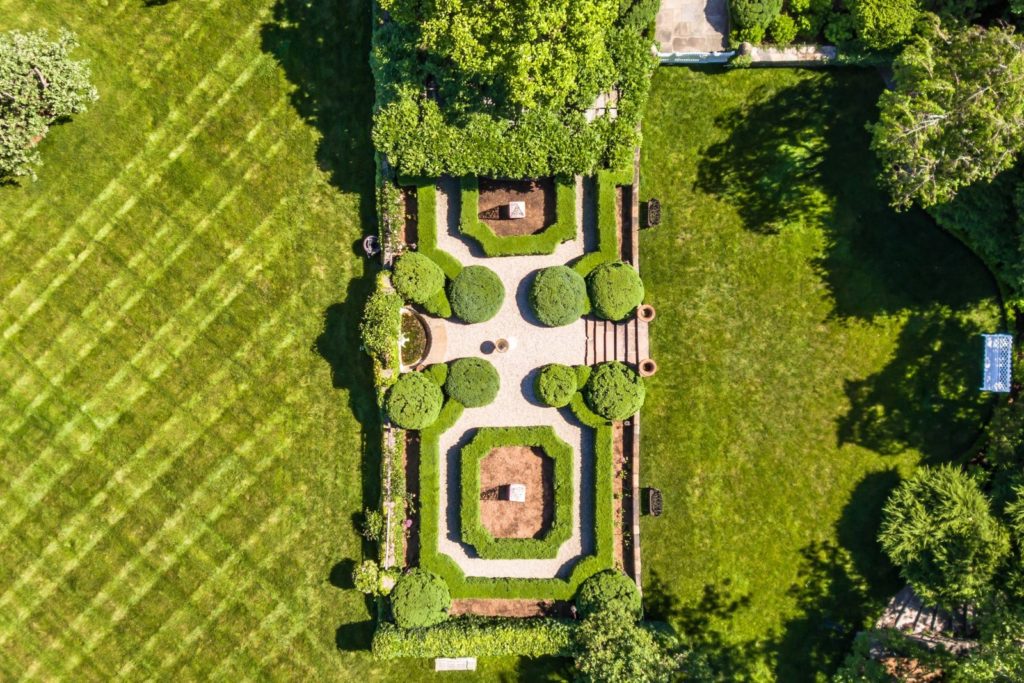
Another garden sits near the pool.
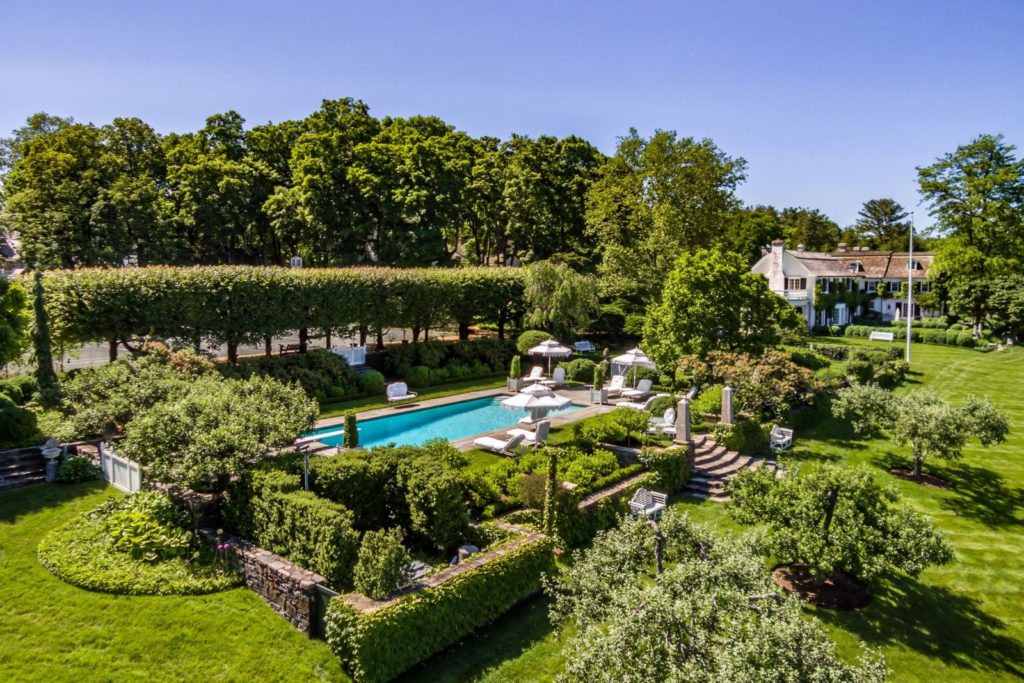
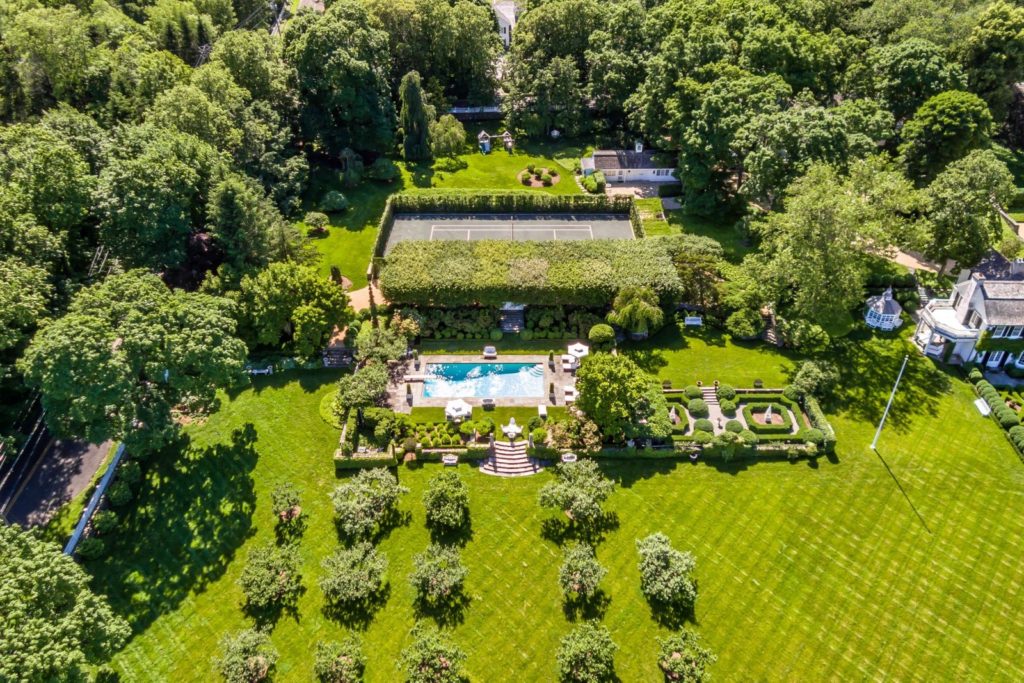

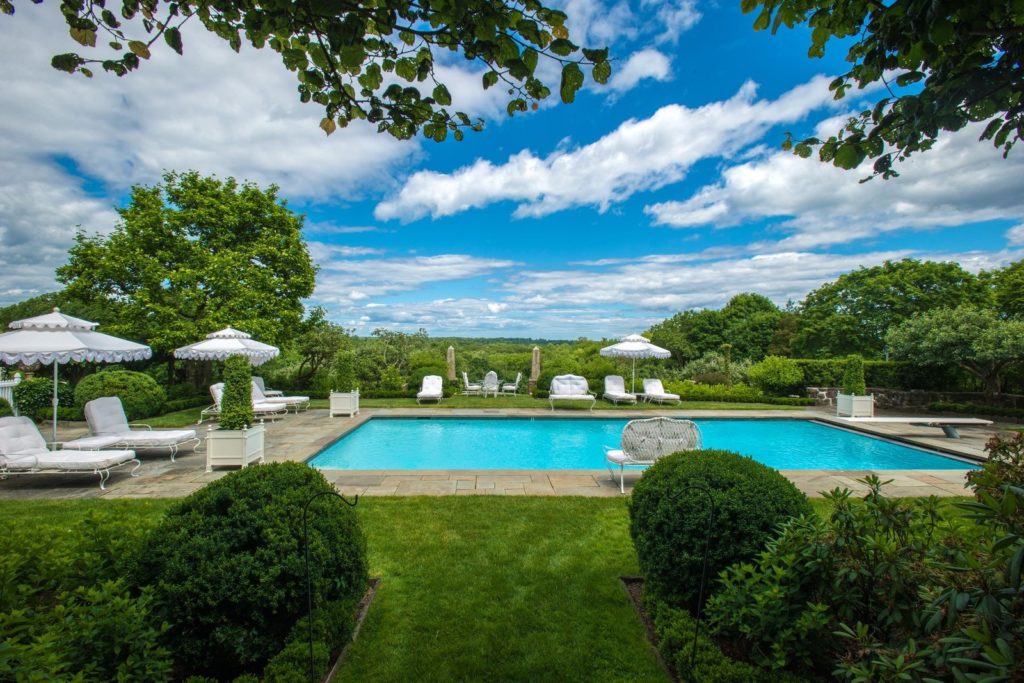
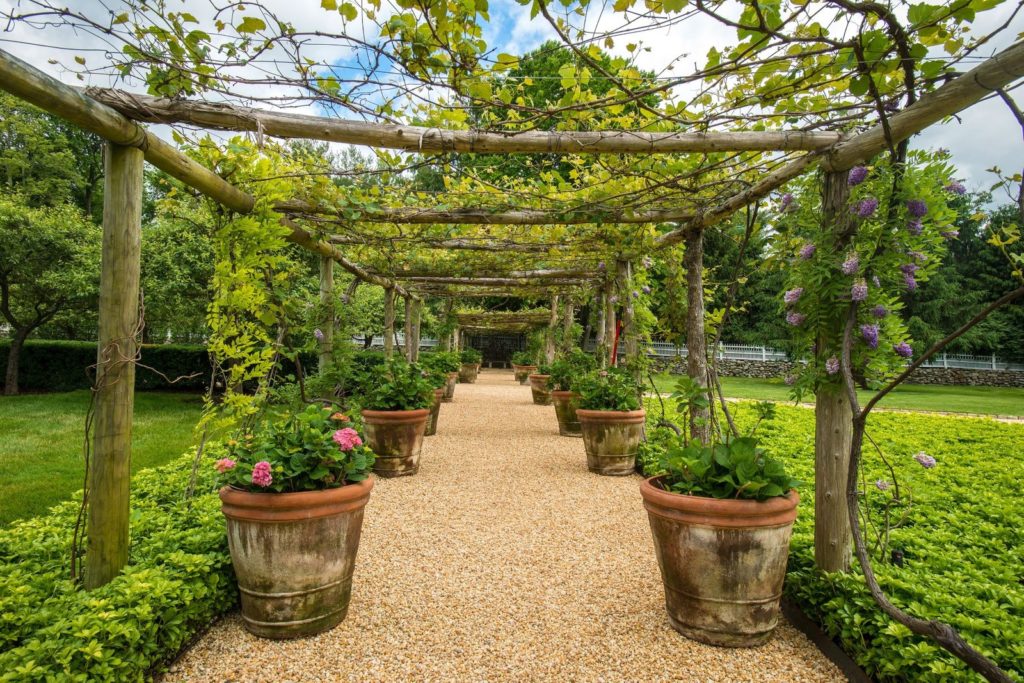
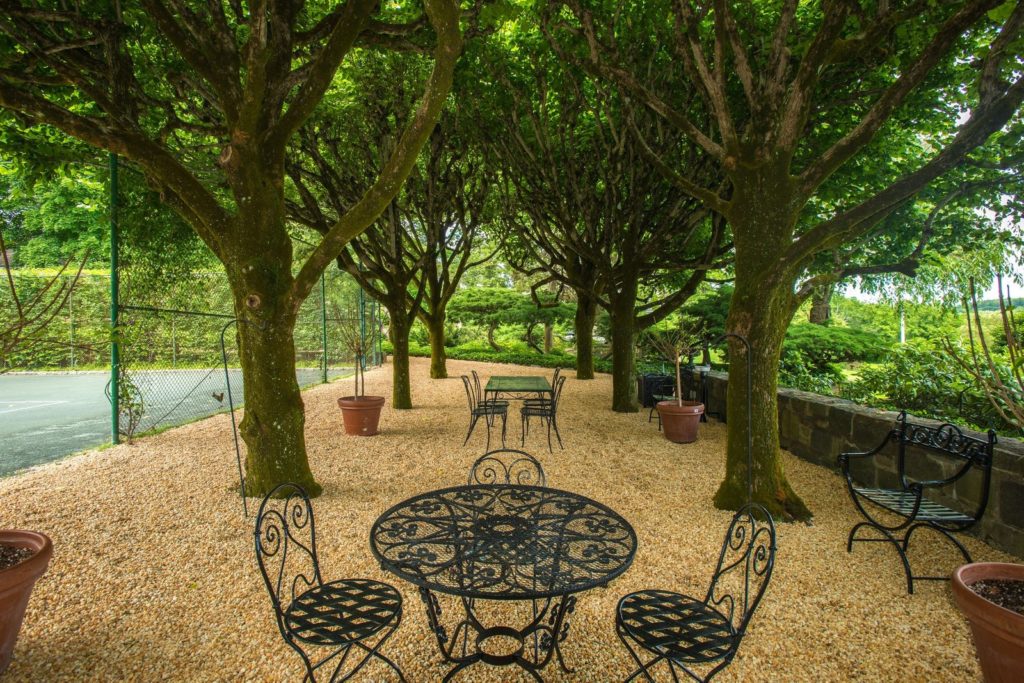

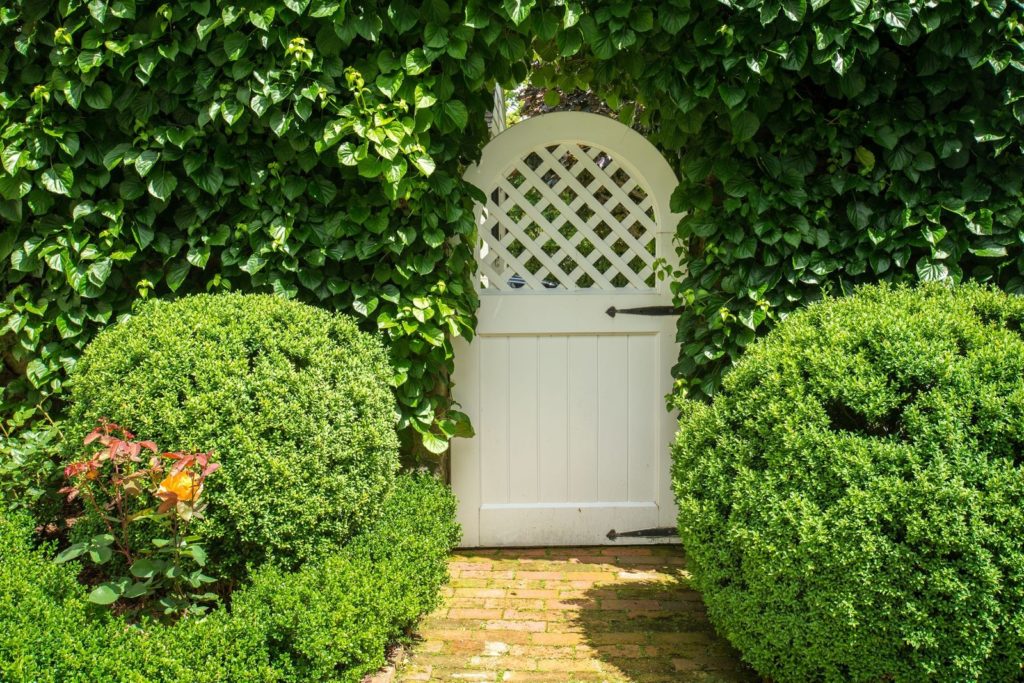

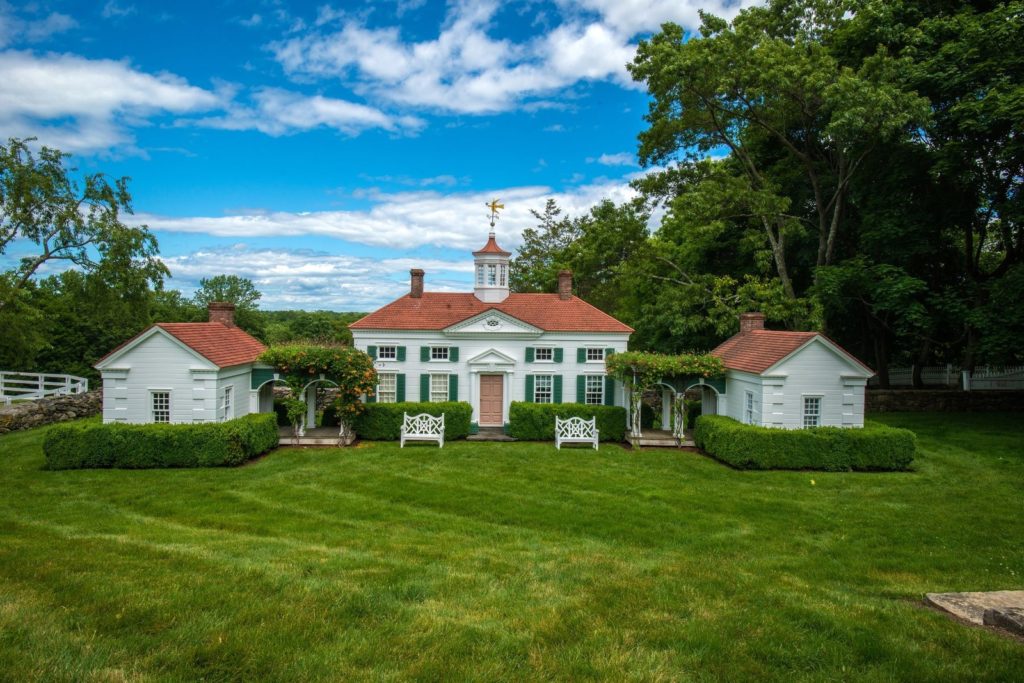
The most unique and exciting feature of the property is the built to scale model of Mt. Vernon playhouse. It is very detailed with a shingled roof and paint colors that match authentic samples from Mt. Vernon, the home of President George Washington.
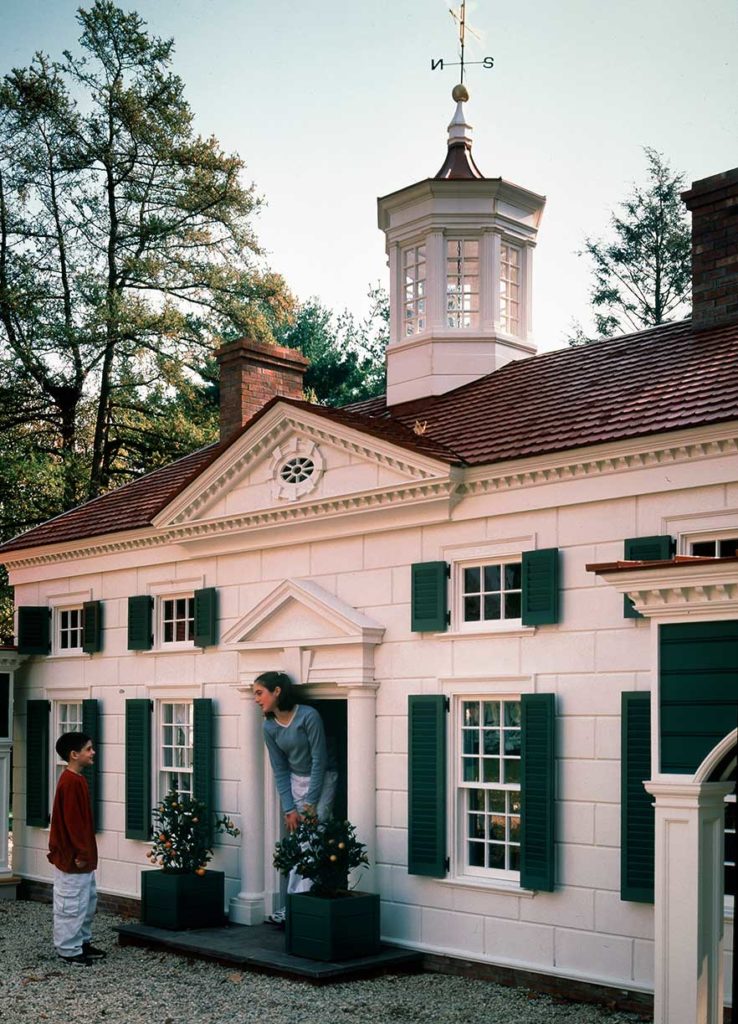
The Mount Vernon playhouse was designed by architect Allan Greenberg and the architect’s project page reveals, “In miniature, it replicates the historic dwelling’s general massing, architectural detailing, and character.” The structure was commissioned by Susie Hilfiger, then wife of fashion icon Tommy Hilfiger, in 1999 as a piece to be shown at a decorator show house in Greenwich, Connecticut.
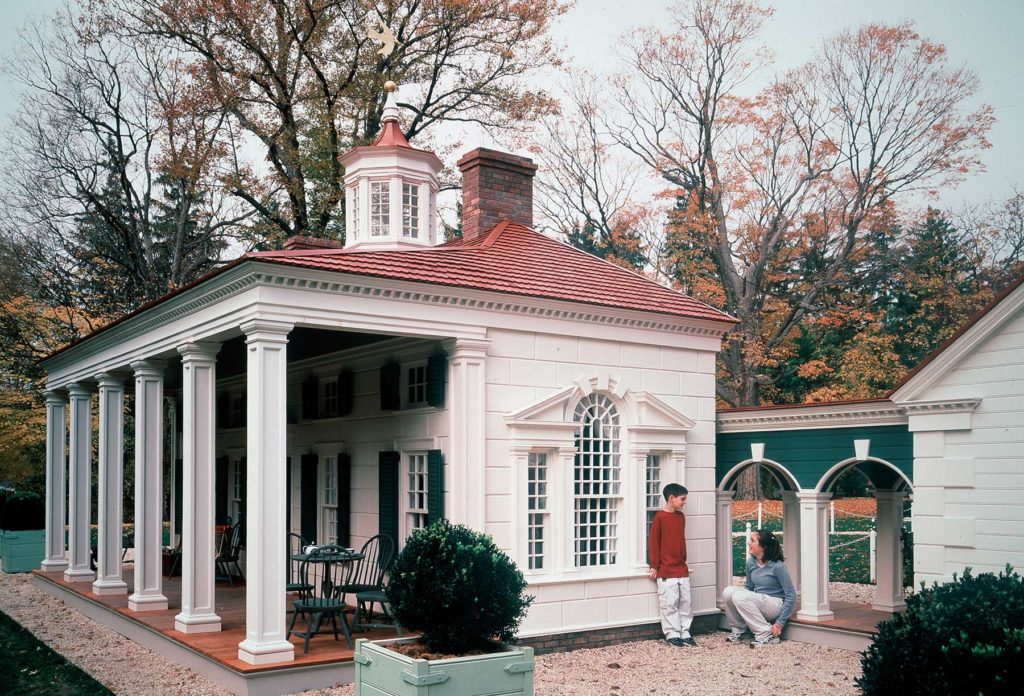
Allan Greenberg simplified the floor plan from eight rooms to four and shrank the interior dimensions to about two-thirds size. The main house measures 8-feet by 22-feet; doorways are 4-feet 3 inches tall; double-hung windows that suggest two stories from outside look into single-floor rooms with ceilings between 6 and 7 1/2 feet high.
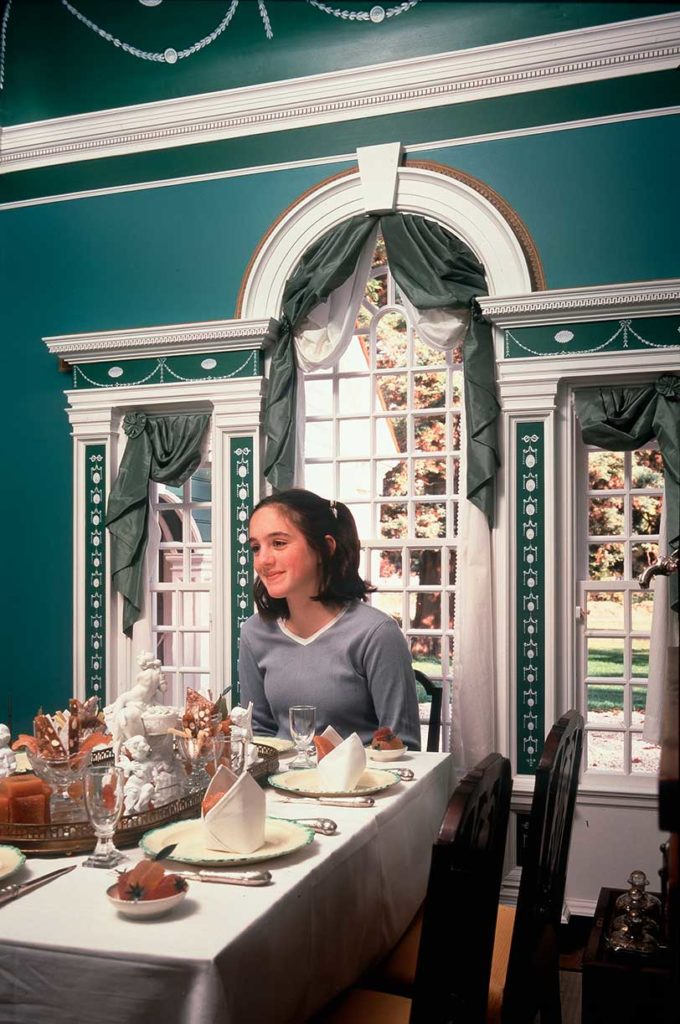
The Los Angeles Times: “For the show house, the mini-manse was furnished in period detail, right down to the monogrammed antique linens, ribbon-back Chippendale mahogany side chairs and a reproduction of a dove weathervane designed by the first president.”
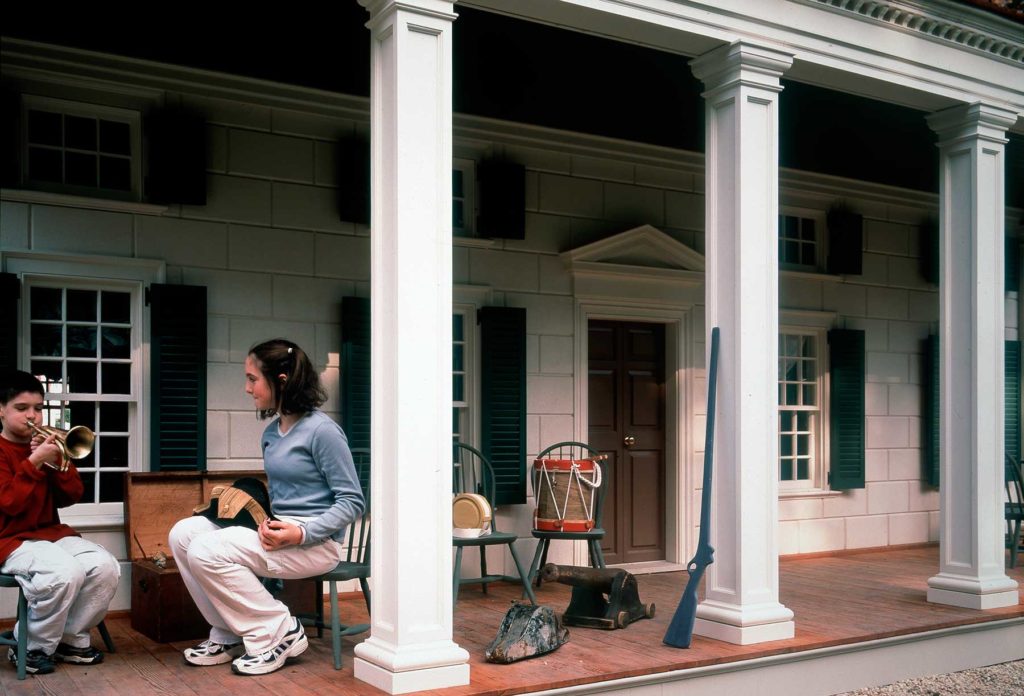
Via The Los Angeles Times: “Greenberg says that although they took liberties with the floor plan, the playhouse design was inspired by original details, and “the craftsmanship is superb throughout the building.” Touches include hand-cut, “fish scale” roof shingles, “rusticated” wood siding to give the grainy appearance of stone, paint colors matching authentic chips provided by the estate, and half-size fireplaces.”
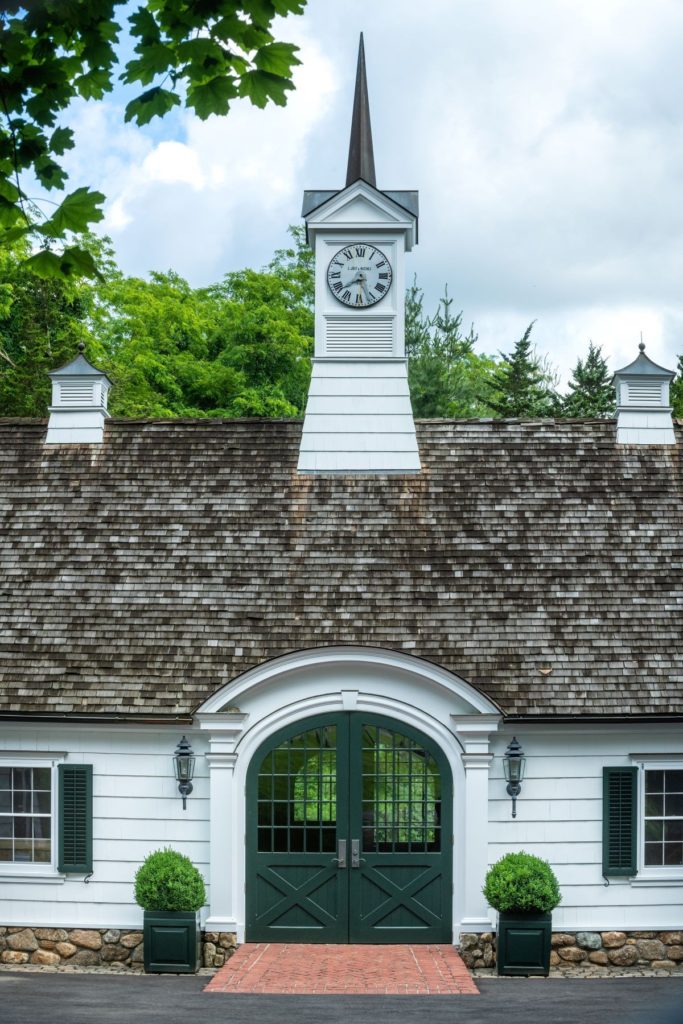
Architect Allan Greenberg also designed the Denbigh Farm stables.
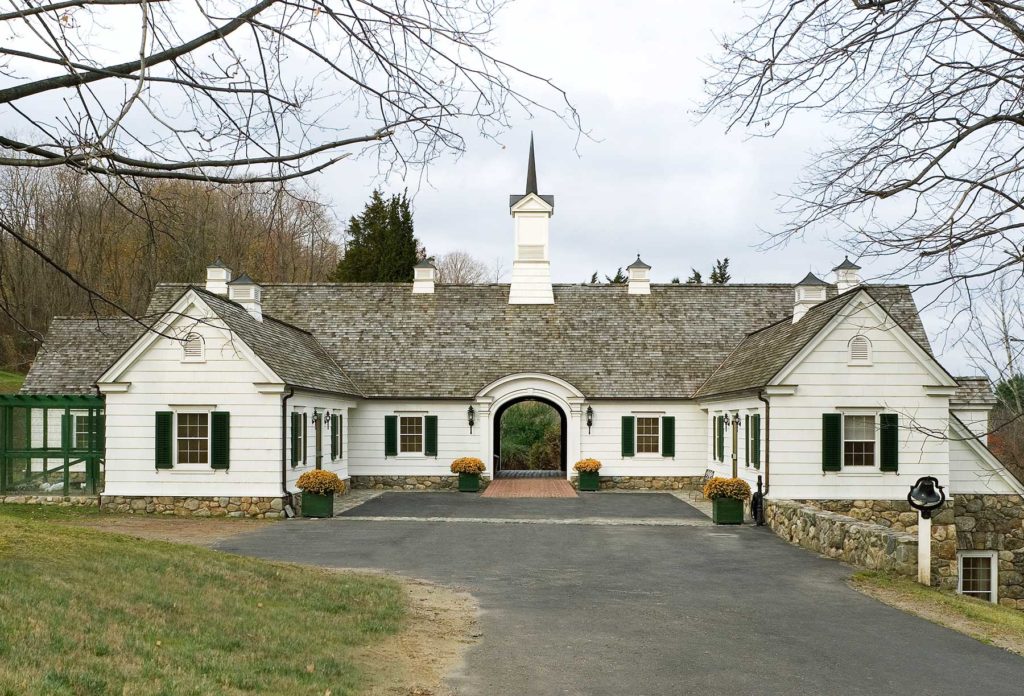
Via Architect Allan Greenberg: “Situated amongst the paddocks of a Civil War era farmhouse, this new structure completes the landscape of the once prominent farm. Bespoke stalls were hand forged per our design in the tradition of honoring the noble beast.”
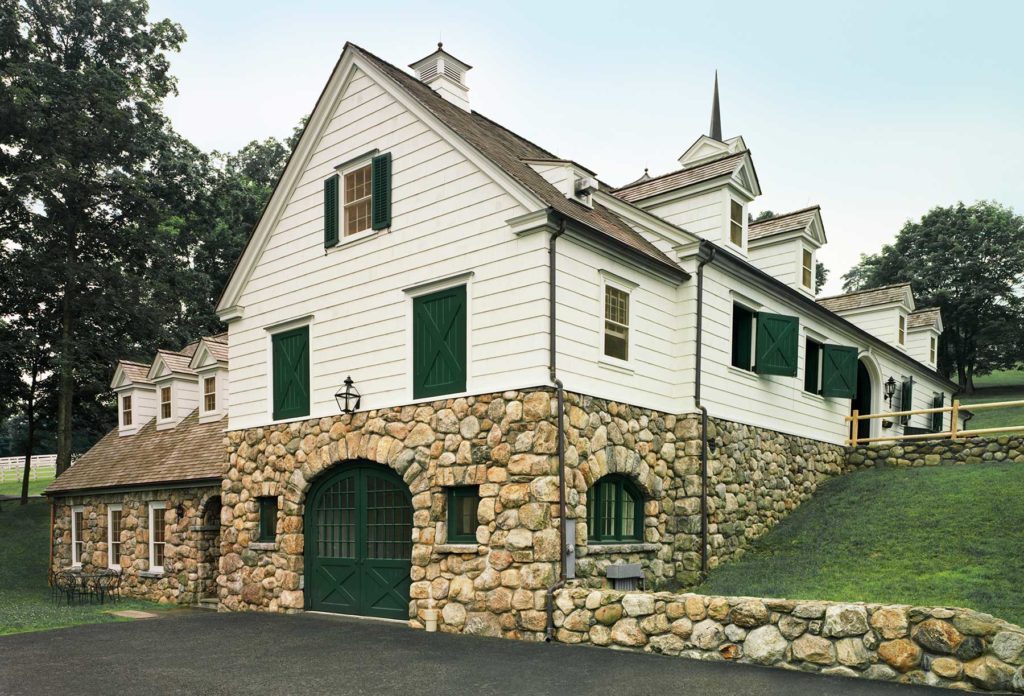
According to the real estate listing, “the gorgeous barn contains six stalls with a lower level of a large home office.”

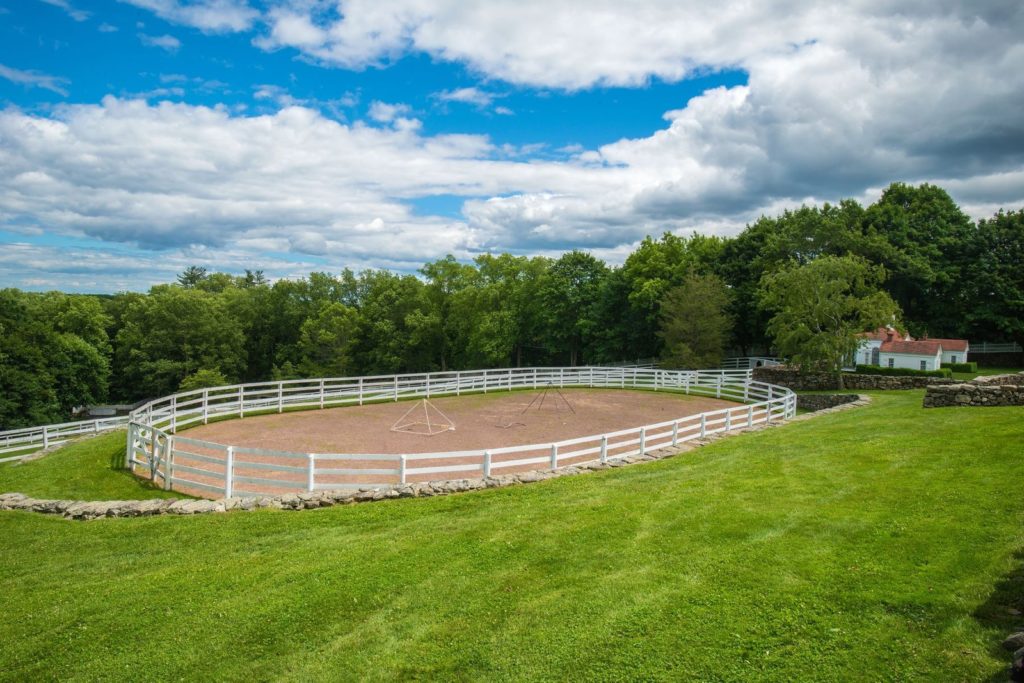
The equestrian facilities include three paddocks and a riding ring.
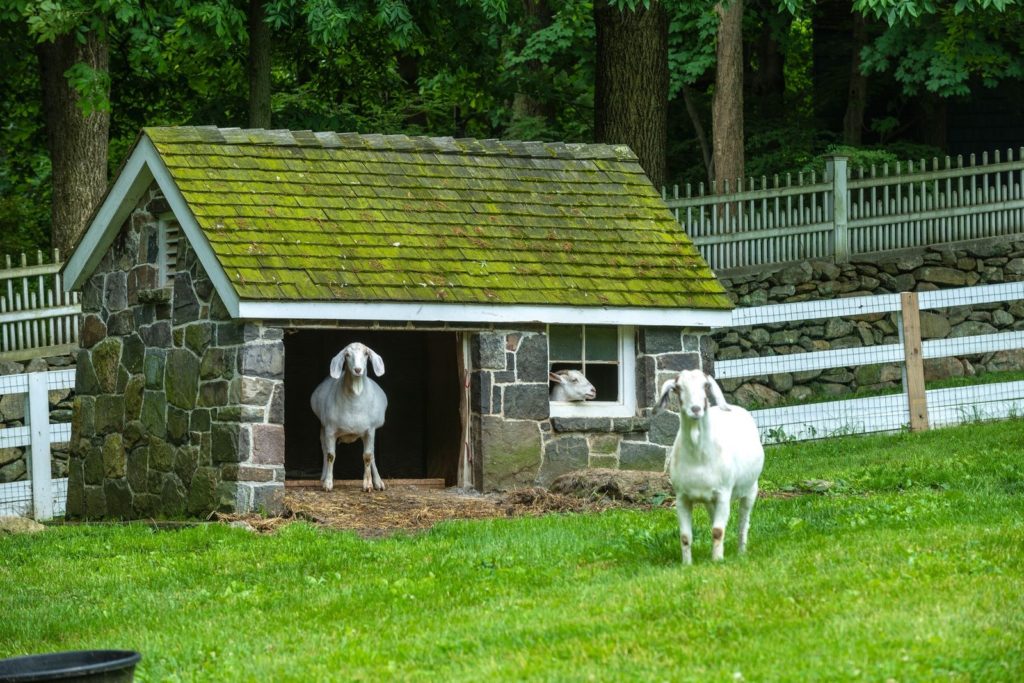
According to the real estate listing, there are many out buildings on the property. “A gym/sports house will delight the fitness enthusiast. Several luxurious guest quarters, greenhouse, fancy chicken coops, goat house plus security office/studio. The apple orchards will make the best homemade pies.”
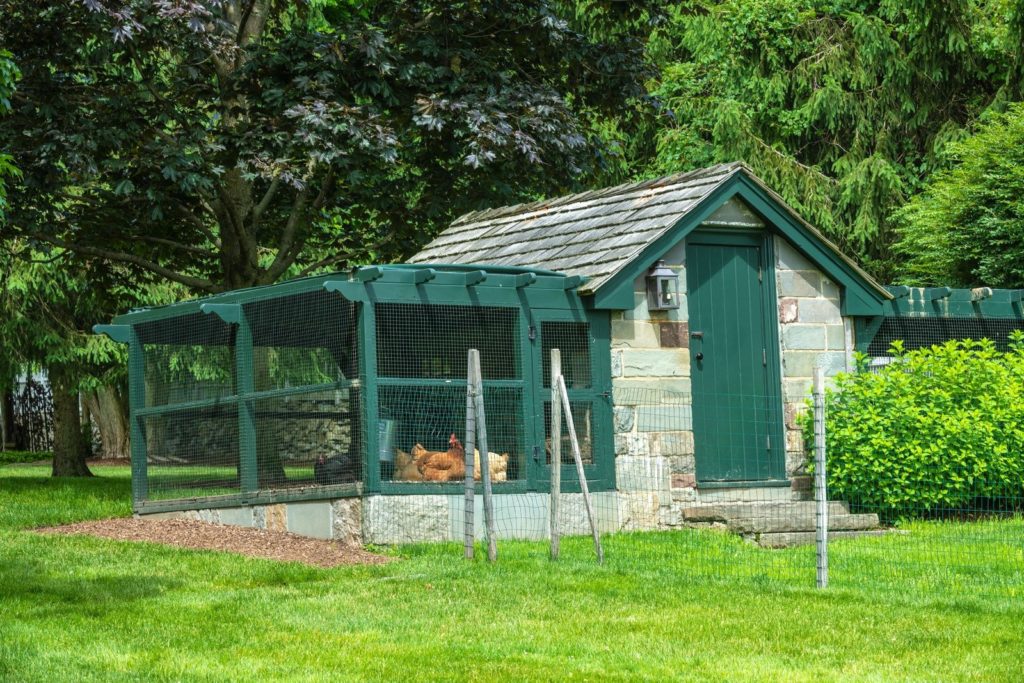
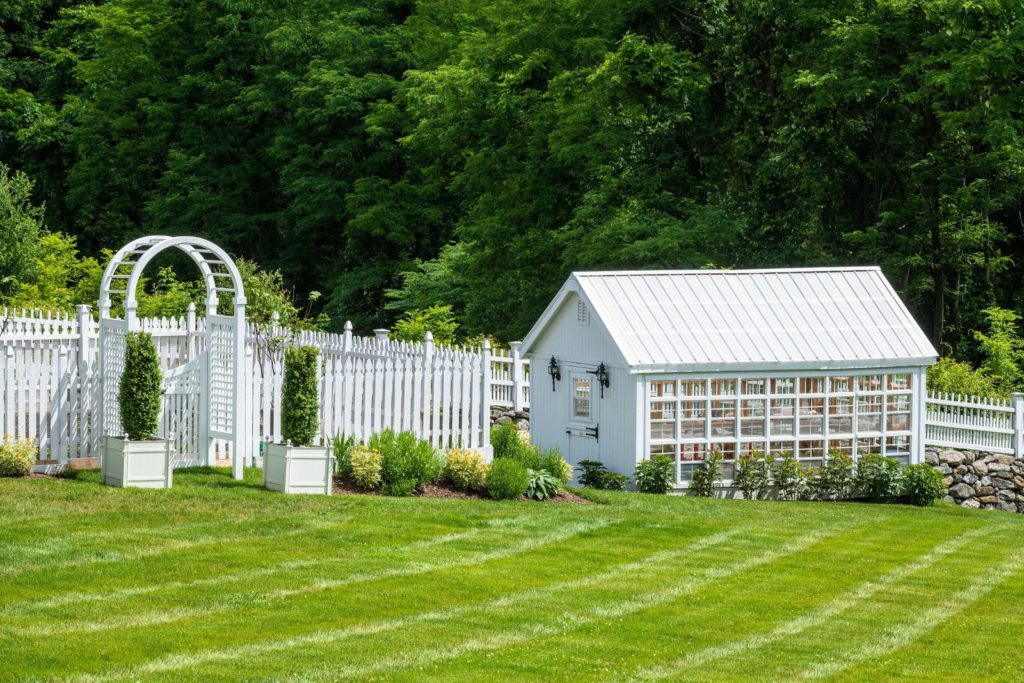
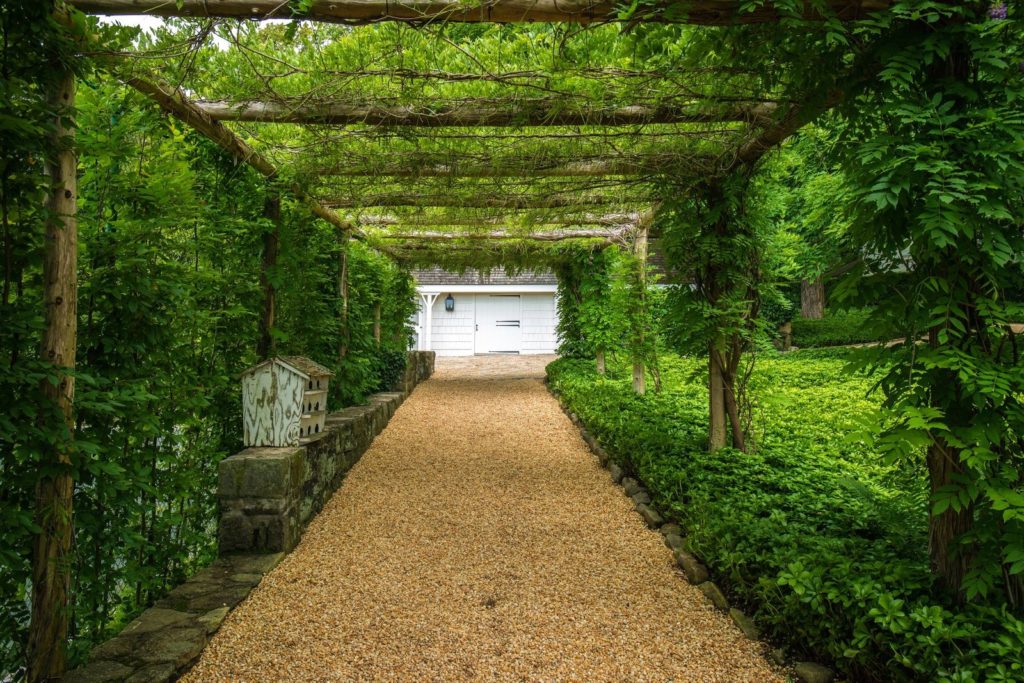
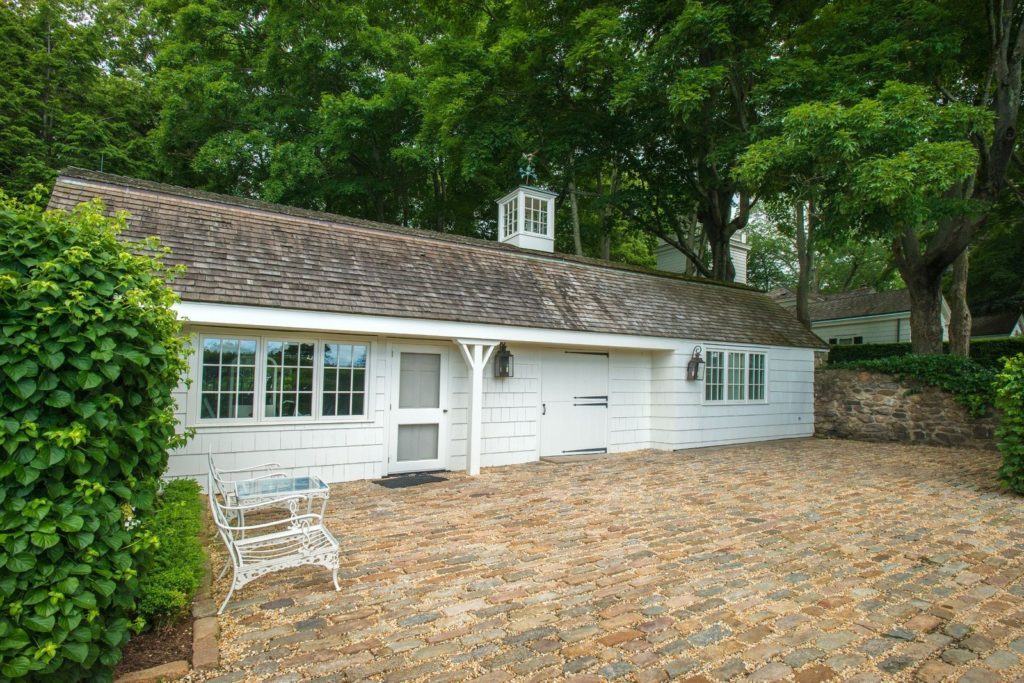
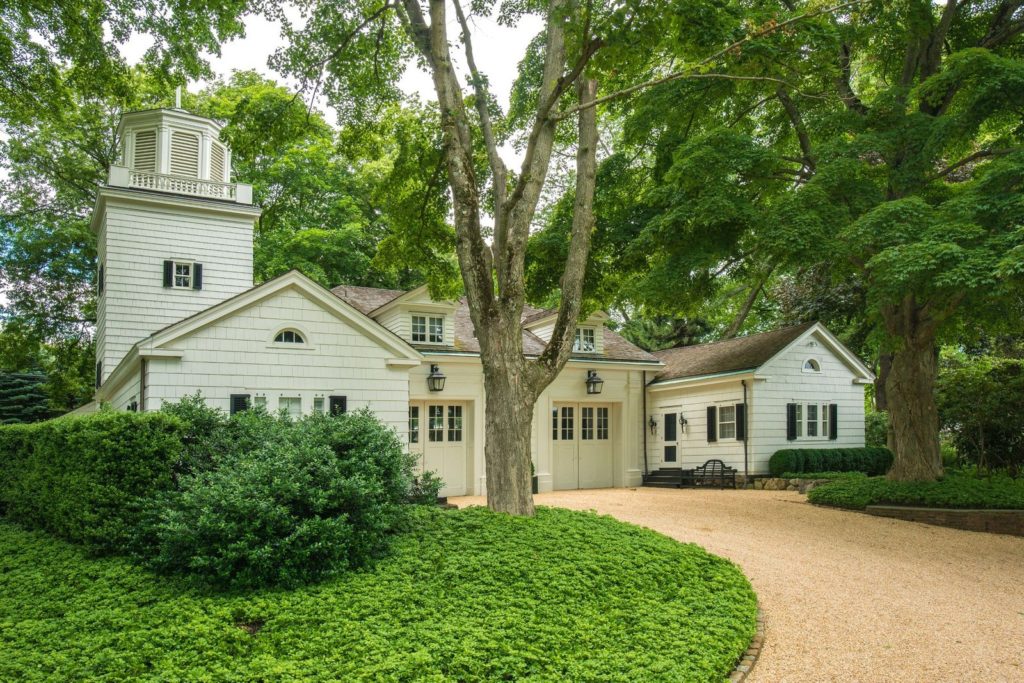
“A magnificent manor home on an elegant landmark estate that is so rare. Seldom do you capture such a majestic view. Impressive, private and so inviting.” I have to agree and if I had $40 Million, I’d buy it myself.
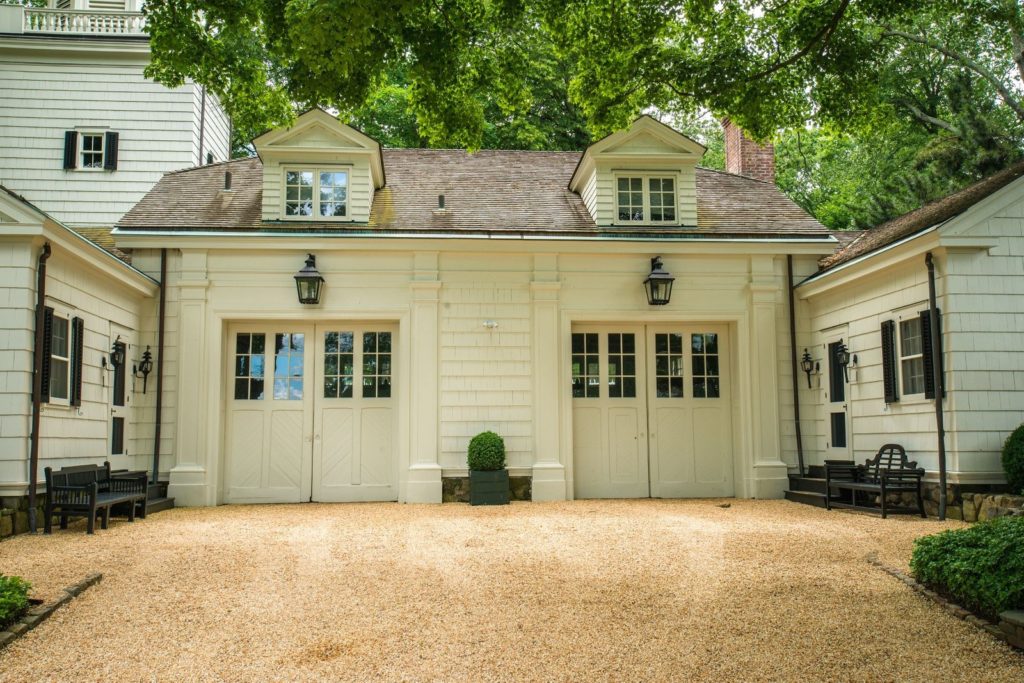
Photos via Sotheby’s Realty, Allan Greenberg, Greenwich Landmark Series, and Tiger Lily’s Interior Design.


